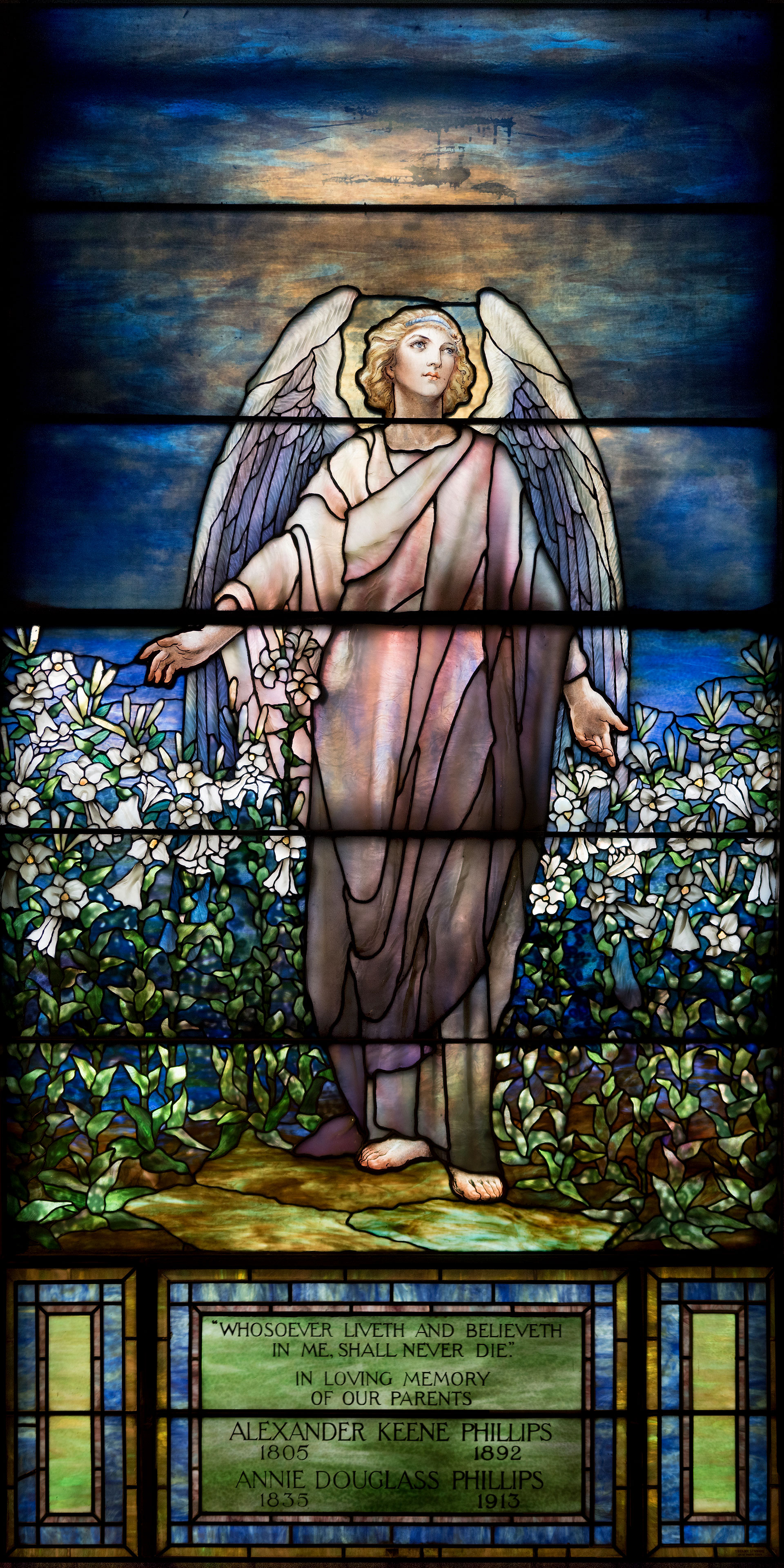
Inscription:“Whosoever Liveth and Believeth In Me, Shall Never Die”
Dedication: In memory of Alexander Keene Phillips, 1805-1892 and Annie Douglas Phillips, 1835-1913, Given by children of Alexander Keene Phillips in memory of parents. The window was dedicated on July 6, 1914.
Maker/Date: Tiffany Studios, New York, 1914
Description – The inscription is from John 11:26. Jesus is speaking with Martha in Bethany, consoling her and is trying to connect the resurrection with the present.
Background – Alexander K. Phillips became the first president of the National Bank of Fredericksburg in 1865 and had been previously involved in many businesses, including grain and mercantile. He owned the Commission House in Fredericksburg which was built for him in 1875 and still stands.
Techniques – The angel announced Jesus’ resurrection in the Gospels. In this window, the angel is sitting in a field of snow-white lilies, clad in robes of pink. The windows show Tiffany’s work in drapery glass for the angel’s robes that are close to fabric folds. Tiffany’s use of glass plays well with the sun which strikes the window in the morning hours. It accentuates the paint and enamel to the face and hands. The yellow-streaked, sun-dappled clouds are a dawn-sky, a common metaphor for rebirth
Another use of glass is fractured glass in the flowers. Fractured glass is embedded glass with tiny paper-thin flakes in different colors. It was made by breaking vessels blown thin, spreading the shards on a marver and embedding them into the molten glass. These multicolored, irregularly shaped fragments produced visually complex effects, which were perfect for representing foliage. Typically this glass was used for landscapes.
A final technique is the use of jewel-like objects in the flowers. These are pieces of hot glass that are press-molded into a jewel-like shape.